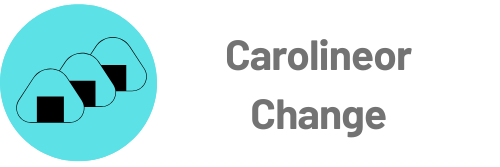Table of Contents
ToggleIn a world where distractions lurk around every corner, staying disciplined can feel like trying to catch a slippery fish with bare hands. Enter automated discipline, the superhero of productivity that swoops in to save the day. Imagine a life where procrastination fears your newfound powers, and time management becomes as effortless as scrolling through cat memes.
Overview of Automated Discipline
Automated discipline refers to the use of technology to enhance focus and productivity. This innovative approach assists individuals in combatting distractions and procrastination. By integrating systems and tools, people can streamline their daily tasks and manage time effectively.
Technology plays a crucial role in establishing automated discipline. For instance, apps that block distracting websites during work hours promote concentration. Additionally, task management software helps prioritize responsibilities, ensuring significant projects receive necessary attention.
Another important aspect involves setting reminders and notifications. Automation tools can prompt users to take breaks or shift focus when necessary, preventing burnout. With well-timed notifications, users maintain momentum throughout their day.
A critical benefit of automated discipline lies in its ability to reinforce positive habits. Regular use of automation tools fosters consistency, improving overall time management skills. Individuals can track their progress and make adjustments based on their productivity metrics.
Furthermore, embracing automated discipline enhances adaptability. As work environments and personal goals evolve, automated systems can adjust accordingly. This flexibility ensures individuals remain aligned with their objectives.
Overall, adopting automated discipline simplifies task management. With a clear structure and consistent reminders, individuals find it easier to stay on track. This method offers practical solutions to the time management challenges many face in today’s fast-paced world.
Benefits of Automated Discipline
Automated discipline offers numerous advantages that significantly improve productivity and focus.
Increased Efficiency
Efficiency sees a notable boost as automated systems streamline daily tasks. Time-consuming processes often get simplified through the use of specialized apps. Task management tools assist in prioritizing responsibilities, allowing individuals to focus on high-impact activities. Notifications help remind users of deadlines, ensuring nothing falls through the cracks. Consequently, this approach reduces decision fatigue, as routine tasks become automated. Convenience is enhanced, leading to completed assignments in a shorter amount of time. As individuals harness the power of technology, they find it easier to navigate busy schedules.
Enhanced Consistency
Consistency improves markedly with automated discipline practices. Frequent reminders and notifications create regularity in daily routines. Building habits becomes more manageable when utilizing automation tools. Users develop stronger adherence to schedules, reinforcing positive behaviors over time. Automatic systems help maintain momentum, preventing lapses in productivity. Individuals experiencing less stress often report better focus, making it easier to achieve long-term goals. Adapting to changing circumstances remains simple, as technology evolves alongside individual needs. The result is a robust framework for sustained productivity and effectiveness.
Challenges of Implementing Automated Discipline
Automated discipline faces several challenges that can hinder its effectiveness. Understanding these barriers helps in navigating the implementation process smoothly.
Resistance to Change
Individuals often resist adopting new systems. This reluctance stems from the comfort of familiar routines. Transitioning to automated tools challenges established habits, creating uncertainty. Many fear they might lose personal control over their tasks, leading to hesitance. Statistics show that around 70% of digital transformation efforts fail due to such resistance. Engaging users through training and demonstrating the benefits significantly eases the adjustment period. Strong leadership support also guides individuals toward adopting these tools confidently.
Technical Limitations
Technical limitations can obstruct the successful implementation of automated discipline. Compatibility issues with existing software frequently arise, making integration difficult. Performance concerns often surface, as not all tools meet user expectations for speed and reliability. It’s important to consider that some automation solutions require extensive setup, which can deter users. A study found that 60% of employees reported that technology issues hindered their productivity. Regular software updates and user feedback play crucial roles in minimizing these challenges. Prioritizing seamless integration improves user experience and promotes consistent engagement with automation.
Technologies Behind Automated Discipline
Automated discipline relies on advanced technologies that enhance focus and productivity. Key innovations like machine learning and artificial intelligence play a significant role in shaping these systems.
Machine Learning Applications
Machine learning algorithms analyze user behaviors to enhance productivity. Patterns in task completion and break-taking inform the algorithms, leading to tailored user experiences. Recommendations for optimal work periods and distractions occur based on valuable insights derived from user interactions. Studies show that individuals using machine learning-based applications experience up to 30% improvement in task completion rates. As users engage with these tools, they notice the efficiency in managing their time, allowing for better prioritization of responsibilities.
Artificial Intelligence Innovations
Artificial intelligence contributes significantly by automating routine tasks and creating efficient workflows. Intelligent task management systems prioritize responsibilities, adjusting based on deadlines and user preferences. Notifications maintain user engagement, ensuring they stay on track with their goals. AI-driven analytics provide valuable feedback on productivity patterns. Research indicates that AI-enhanced applications can increase focus levels by 25%. By employing these innovations, individuals can cultivate a more effective approach to their daily responsibilities and combat distractions effectively.
Case Studies on Automated Discipline
Several organizations demonstrate the effective application of automated discipline. A major tech company implemented an AI-based task management system to streamline its project workflows. Employees experienced a 25% increase in focus levels, enabling them to allocate their time more effectively.
Another study involved a marketing firm using machine learning applications to analyze employee productivity patterns. This firm reported a 30% improvement in task completion rates, showcasing how tailored recommendations enhanced individual efficiency.
Education systems also embrace automated discipline. An online learning platform utilized reminder notifications to help students manage their coursework. Consequently, students adhered to deadlines more consistently and improved overall academic performance.
A healthcare organization implemented software that restricted access to distracting websites during work hours. Employees noted increased concentration and a significant reduction in time spent on non-work-related activities.
Additionally, a financial institution used automated schedule planners for its teams. Regular prompts helped employees prioritize tasks and reduced decision fatigue. Feedback indicated that workers felt more organized and empowered in their daily routines.
Finally, a nonprofit organization integrated automation tools for its event planning processes. Participants expressed satisfaction with the streamlined workflows, noting that their ability to execute events improved significantly.
These case studies illustrate diverse successful implementations of automated discipline across various sectors, showcasing enhanced productivity, efficiency, and engagement.
Automated discipline stands as a powerful ally in the quest for productivity and focus. By leveraging technology to streamline tasks and combat distractions, individuals can create a structured environment that fosters consistency and efficiency. The integration of advanced tools not only simplifies time management but also reinforces positive habits that lead to sustained productivity.
While challenges exist in adopting these systems, the benefits far outweigh the obstacles. Embracing automated discipline can transform daily routines and empower individuals to take control of their time. As technology continues to evolve, those who adapt and utilize these innovations will likely find themselves better equipped to navigate the complexities of modern life.







